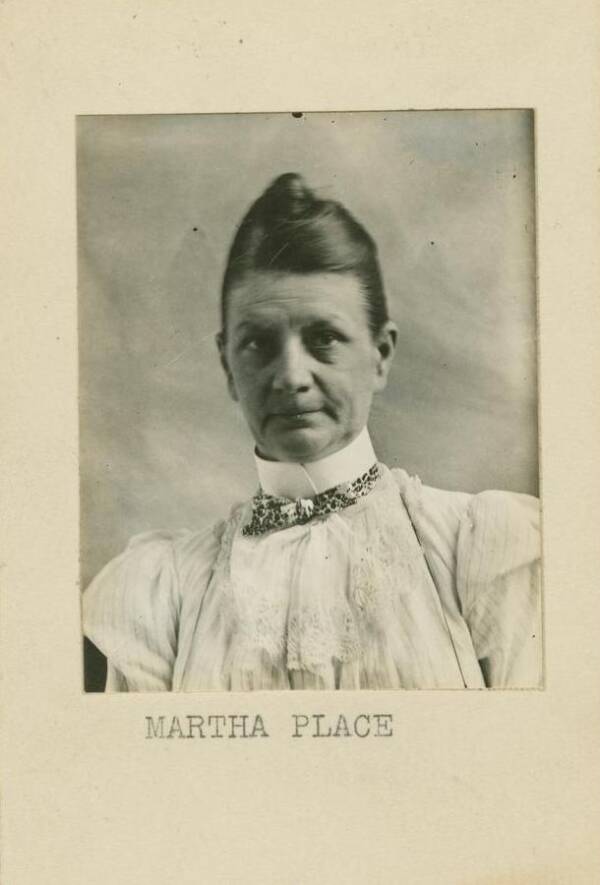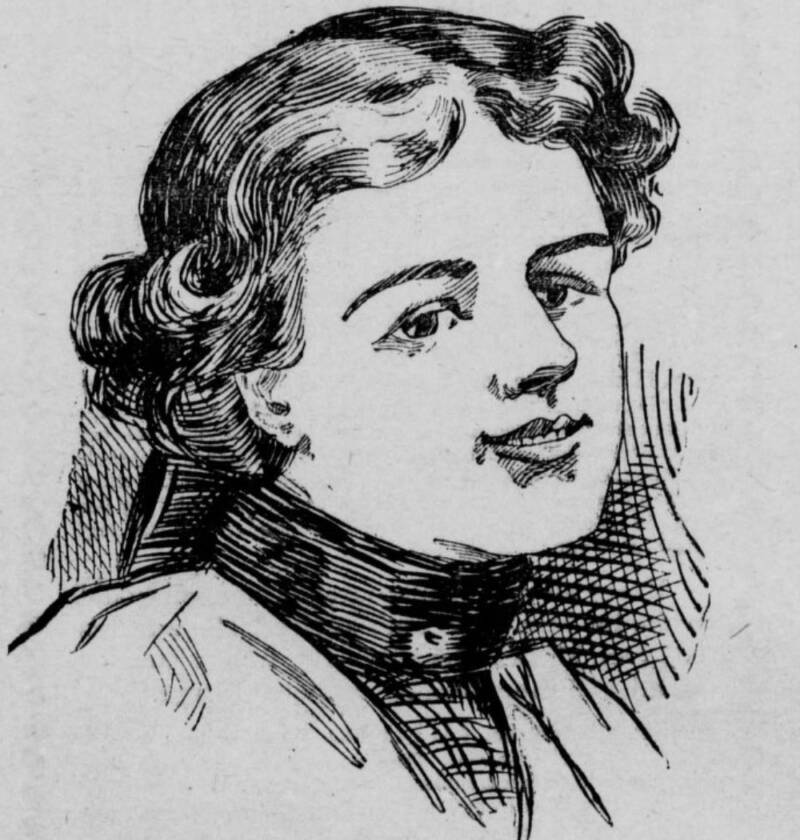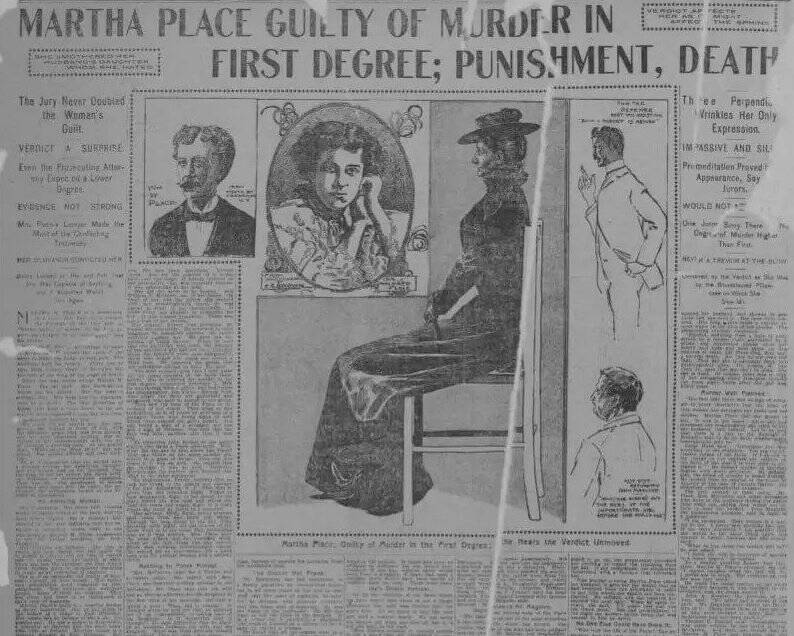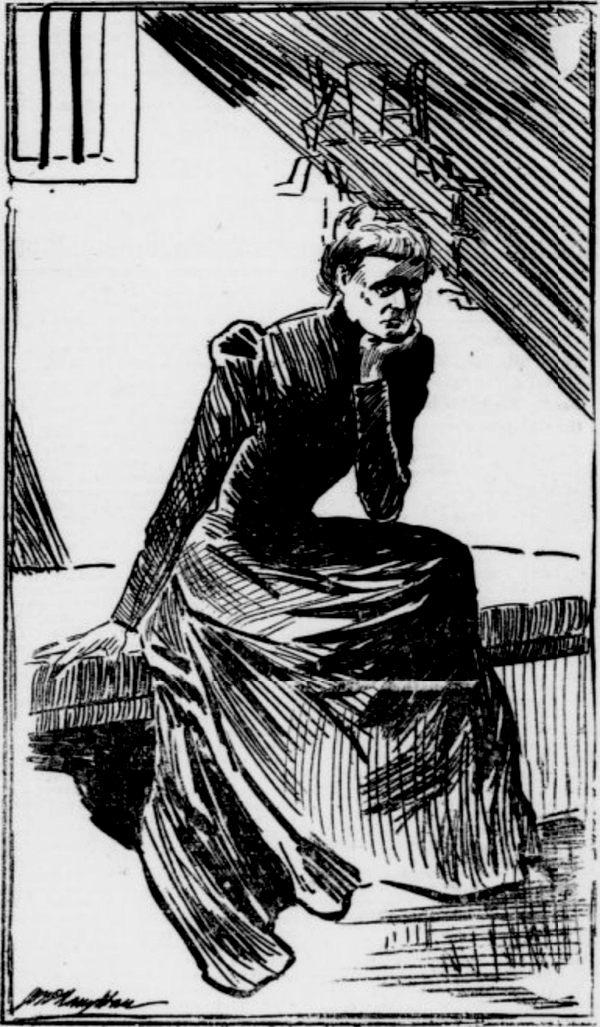Martha Place brutally murdered her 17-year-old stepdaughter Ida with acid in 1898 and was executed by electric chair the following year.

Public DomainA mugshot of Martha Place taken at Sing Sing Prison. 1899.
On March 20, 1899, an unusual execution took place at Sing Sing Prison in New York. Eleven men had been executed by the electric chair in the state, but on that day it was a woman who entered the execution chamber — a convicted murderer named Martha Place.
The first woman to ever die by electric chair, Place had been found guilty of brutally murdering her 17-year-old stepdaughter, Ida. Following an argument, Place had splashed acid in Ida’s face and smothered her to death.
But though many were satisfied that Place’s sentence matched her crime, it posed some problems for her executioners. Used to dealing with men, they weren’t sure how to work around Place’s long, thick hair, or how to protect her modesty while attaching electrodes to her ankles.
This is the story of Martha Place, the “Brooklyn Murderess” who became the first woman in history to be executed by the electric chair.
The Many Misfortunes Of Martha Place
Born on Sept. 18, 1849, as Martha (Mattie) Garrettson, Martha grew up in Millstone, New Jersey. Her life took a dark turn at the age of 23, however, when the Trentonian reports that a moving sleigh struck her in the head. Her brother later remarked that she never fully recovered from her injuries.
Indeed, Martha’s misfortunes soon seemed to pile up. Though she married and had a son, her husband abandoned the family and later died. Martha was subsequently forced to give her only child up for adoption.

San Francisco Call/California Digital Newspaper CollectionThe press later wrote that jealousy drove Martha Place to kill her stepdaughter.
She eventually found work as a housekeeper in Brooklyn, where Martha worked for a widower named William Place. The two eventually married, making Martha the stepmother of William’s young daughter, Ida. But marital bliss did not follow. Instead, Martha grew deeply jealous of her stepdaughter.
“She felt that her husband loved his daughter more than he did her, and her jealousy rapidly changed into hatred for the little girl,” The New York Times reported during Martha Place’s July 1898 murder trial. “As the child grew into a pretty young woman and became more and more of a contrast to her, her hatred began to take active form.”
Before long, Martha Place’s resentment of Ida would devolve into violence.
The Gruesome Murder Of Ida Place
On the morning of February 7, 1898, an argument broke out at the Place home in Brooklyn. According to Amazing True Stories Of Female Executions by Geoffrey Abbot, William and Martha fought, and Ida took her father’s side. When William left for work, Martha turned on her stepdaughter.
“His daughter sided with him as she usually did and slammed in my face the door of her room when I went to speak with her,” Martha Place told police, according to The New York Times. “That made me feel mad, so I got some acid from my husband’s desk and threw it into her face.”

The Age-Herald/Library of CongressMartha Place killed her 17-year-old stepdaughter Ida Place in 1898.
According to Place, she then left Ida’s room. But an autopsy later suggested that Place had continued the attack. While Ida writhed in pain, doctors suspected that Place had “heaped” bedding upon Ida and smothered her.
Then, Martha Place picked up an axe she found in the cellar and waited for her husband to come home. “I was afraid he was going to attack me,” she later told the police. “I took [the axe] upstairs with me. My husband came in afterward and I struck him with it.”
As William stumbled onto the street, bloodied and crying for help, Martha fled to the kitchen and tried to kill herself by turning on the gas. Instead, the police arrived and arrested her.
Soon afterward, the sensational trial of Martha Place began.
How The ‘Brooklyn Murdress’ Was Sentenced To Die By Electric Chair
That July, journalists swarmed Martha Place’s sensational murder trial and reported on every deal. “Her face is not pleasant,” noted The World. “She looks like a woman who has spent most of life fretting and worrying.”
The New York Times additionally described Martha as being stoic and having the kind of face that “reminds one of a rat.” Their report noted that her face didn’t change during the murder trial, except when William testified. Then, “her thin lips parted in a sardonic grin, and she fixed her eyes upon him.”

Public DomainNewspaper coverage of Martha Place’s trial and death sentence from the New York Journal.
At the end of her trial, Martha Place was found guilty of first-degree murder and sentenced to death. Her counsel soon reached out to the new governor of New York, Theodore Roosevelt, in hopes of having her sentence commuted. But Roosevelt refused. “My sympathies in criminal cases are for the wronged and not the wrongdoer,” he said according to the Trentonian.
Martha’s trial had been sensational enough, but her sentence was even more so. After all, the electric chair was still a relatively new method of execution. Until her sentencing, it had never been used on a woman before.
The Execution Of Martha Place
By 1899, the electric chair had been used for 11 executions in New York State. All of the condemned had been men, starting with convicted murderer William Kemmler. His execution on Aug. 6, 1890 hadn’t gone well — his executioner had to electrocute him twice before he died.
Since the electric chair had never been used on a woman, Martha Place allegedly believed that she would be spared at the last minute. She was shocked when Roosevelt refused to commute her sentence, but arose on the morning of her execution “reasonably composed,” per the Trentonian.

El Paso Daily Herald/Library of CongressNewspapers closely chronicled Martha Place’s final days in prison.
On March 20, 1899, she donned a black dress she’d made herself, and made her way to the execution room. There, Place’s gender created some obstacles for her executioners. Her thick, graying hair had to be clipped so that electrodes could be placed on her forehead, and her long skirt was slit so that electrodes could be placed on her ankles without exposing them.
Strapped into place, Martha uttered her last words: “God help me.” Then, her executioner sent 1760 volts of electricity through her body. Seconds later, Martha Place was dead at the age of 49.
“The last woman condemned to die in this State went to the gallows shrieking and fighting,” the San Francisco Call noted in the coverage of Martha’s execution, “but Mrs. Place hardly uttered a sound.”
Martha may have been the first woman to die by the electric chair, but she wouldn’t be the last. As time went on, it proved to be a popular method of execution in the United States. Of nearly 8,800 executions that took place between 1890 and 2010, 4,374 took place in the electric chair, according to a 2014 study, dwarfing other methods.
As such, Martha Place is more than just the “Brooklyn Murderess,” the woman found guilty of killing her teenage stepdaughter in a fit of rage and jealousy. As the first woman to die by the electric chair, she also makes up an important part of the history of capital punishment in the United States.
After reading about Martha Place, the first woman to be executed by the electric chair, see how Hans Schmidt became the first — and only — Catholic priest to be executed in American history. Or, discover the story behind the sensational execution of infamous serial killer Ted Bundy.





